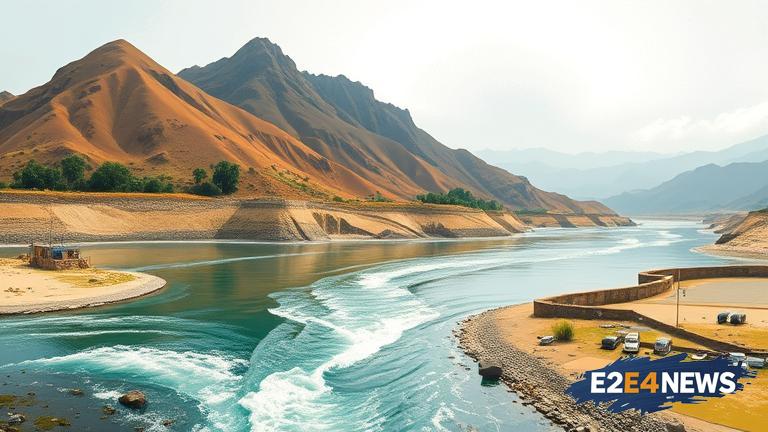The Indus Waters Treaty, signed on September 19, 1960, has been a topic of discussion for decades. The treaty was negotiated between India and Pakistan, with the World Bank acting as a mediator. The treaty aimed to resolve the disputes over the sharing of the Indus River basin’s waters. However, according to the External Affairs Minister (EAM), the treaty was not signed with the intention of promoting peace, but rather as an act of appeasement. The EAM stated that the treaty was a result of India’s desire to maintain good relations with Pakistan, despite the latter’s aggressive behavior. The treaty allocated 80% of the water to Pakistan, while India received 20%. The treaty also established the Indus Basin Development Fund, which was used to finance the construction of dams, canals, and other water infrastructure in Pakistan. Over the years, the treaty has been a subject of controversy, with both countries accusing each other of violating its terms. India has long been concerned about Pakistan’s use of the waters for militant activities, while Pakistan has accused India of violating the treaty by constructing dams and hydroelectric projects on the Indian side of the border. The EAM’s statement has sparked a debate about the treaty’s effectiveness and whether it has achieved its intended purpose. Many experts believe that the treaty has failed to promote peace and cooperation between the two countries. Instead, it has created more tensions and disputes. The treaty’s limitations and loopholes have been exploited by both countries, leading to a stalemate. The EAM’s statement has also raised questions about India’s foreign policy and its approach to dealing with Pakistan. Some have criticized the government for being too soft on Pakistan, while others have praised the EAM’s honesty in acknowledging the treaty’s shortcomings. The Indus Waters Treaty is a complex issue that involves not only water sharing but also geopolitics, economics, and national security. The treaty’s impact on the environment, agriculture, and industry has also been significant. The construction of dams and hydroelectric projects has altered the natural flow of the rivers, affecting the ecosystems and biodiversity of the region. The treaty has also had a significant impact on the agricultural sector, with both countries relying heavily on the waters for irrigation. The industry has also been affected, with the treaty’s terms influencing the development of water-intensive industries such as textiles and sugar. The EAM’s statement has highlighted the need for a re-evaluation of the treaty and its terms. There is a growing consensus that the treaty needs to be revised or replaced with a new agreement that takes into account the changing circumstances and needs of both countries. The Indus Waters Treaty is a reminder that even the most well-intentioned agreements can have unintended consequences. It is a complex issue that requires a nuanced and multi-faceted approach, taking into account the political, economic, environmental, and social implications. The treaty’s future is uncertain, and it remains to be seen whether the two countries can come together to find a solution that benefits both nations. The EAM’s statement has sparked a new debate about the treaty, and it is likely that the issue will continue to be a topic of discussion in the coming months and years. The Indus Waters Treaty is a significant issue that affects not only India and Pakistan but also the entire region. It is a reminder that water is a scarce and precious resource that needs to be managed carefully and sustainably. The treaty’s impact on the region’s ecosystem, agriculture, and industry has been significant, and it is essential that both countries work together to find a solution that promotes peace, cooperation, and sustainable development.
